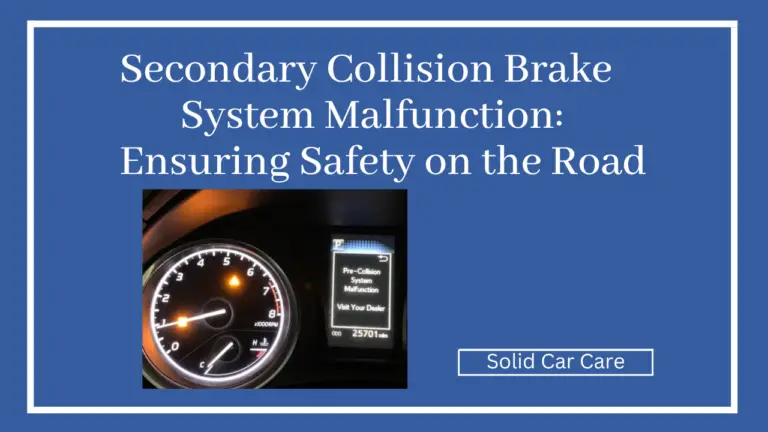Trac Off, VSC, and Check Engine Lights: Diagnosing the Cause of Your Dashboard

Have you ever been driving along, minding your own business, when suddenly a cluster of warning lights illuminates on your dashboard? It’s enough to make anyone’s heart skip a beat. Well, fear not, because we’re about to shed some light on the mysterious ‘Trac Off,’ ‘VSC,’ ‘Trac,’ and ‘Check Engine’ lights that have captured your attention.
These lights are like a secret code, indicating potential issues with your vehicle’s stability control and engine management systems. But what do they mean? And more importantly, how can you fix them?
Stay tuned as we unravel the meaning behind these lights and provide you with some valuable insights to keep your car running smoothly.
Table of Contents
Key Takeaways
- The ‘Trac Off,’ ‘VSC,’ ‘Trac,’ and ‘Check Engine’ lights illuminated on your dashboard indicate issues with your vehicle’s stability control and engine management systems.
- The ‘Trac Off’ light indicates that the traction control system is disabled, which helps maintain traction on slippery surfaces.
- The ‘VSC’ light stands for Vehicle Stability Control, which helps prevent loss of control during cornering or maneuvering by applying brakes to individual wheels.
- The ‘Check Engine’ light is a general warning that indicates a problem with the engine management system, ranging from minor sensor malfunctions to serious engine issues.
What do the lights mean?
Trac Off
If you see the ‘Trac Off’ light illuminated on your dashboard, it means that your vehicle’s traction control system has been disabled. The traction control system is responsible for maintaining traction on slippery surfaces by preventing the wheels from spinning. When this system is disabled, it can affect your vehicle’s ability to maintain stability and control.
To troubleshoot this issue, you can start by checking for any loose connections or damaged wiring in the traction control system. Additionally, you can try resetting the system by turning off the engine, waiting for a few minutes, and then restarting the vehicle.
If the ‘Trac Off’ light persists, it’s recommended to consult a mechanic for further diagnosis and repairs.
VSC
The ‘VSC’ light on your dashboard indicates the status of your vehicle’s Vehicle Stability Control system. Here are some important things to know about VSC:
- VSC Troubleshooting Tips: If the VSC light is on, it could be due to a malfunctioning wheel speed sensor, loose gas cap, vacuum leak, or faulty spark plugs/ignition coils. These issues can affect the performance of your vehicle’s stability control system.
- Common VSC Error Codes: When diagnosing the VSC system, you may come across error codes such as C1203, C1241, or C1336. These codes can help identify the specific problem and guide the repair process.
- Importance of VSC Maintenance: Regular maintenance, including checking and replacing worn-out components, is crucial for the proper functioning of the VSC system. Neglecting maintenance can lead to decreased stability and compromised safety.
- How to Reset VSC System: To reset the VSC system, you can try disconnecting the battery for a few minutes or using a diagnostic tool to clear the error codes. However, it’s essential to address the underlying issue causing the VSC light to come on.
- Upgrading VSC for Enhanced Performance: Upgrading the VSC system can improve vehicle stability and handling. This can be done by installing aftermarket components like performance brake pads, upgraded suspension systems, or advanced traction control modules.
Trac
When it comes to the ‘Trac’ light on your dashboard, understanding its meaning and potential causes is crucial for maintaining the stability and traction control of your vehicle.
The ‘Trac’ light is often combined with the ‘VSC’ light and indicates that the traction control system is disabled.
Common signs of a faulty traction control system include a loss of traction on slippery surfaces and a lack of stability during cornering or maneuvering.
To troubleshoot traction control issues, it’s important to check for faulty wheel speed sensors, loose gas caps, vacuum leaks, and faulty spark plugs or ignition coils.
Regular maintenance is essential for the proper functioning of the traction control system.
To reset the system, consult your vehicle’s manual for specific instructions.
Additionally, improving traction control performance in different driving conditions can be achieved by using appropriate tires, maintaining proper tire pressure, and driving at safe speeds.
Possible Causes:
Now let’s delve into the possible causes behind the ‘Trac Off,’ ‘VSC,’ ‘Trac,’ and ‘Check Engine’ lights.
- Faulty wheel speed sensors can provide inaccurate readings and trigger these warning lights.
- A loose gas cap can affect traction control by altering the fuel mixture, while a vacuum leak can disrupt the air/fuel ratio and cause performance issues.
- Additionally, faulty spark plugs or ignition coils can lead to incomplete combustion, affecting engine performance and triggering the check engine light.
Faulty wheel speed sensor:
A potential cause for a faulty wheel speed sensor is an electrical malfunction in the sensor itself. This sensor provides data to both the traction control and ABS systems. A malfunctioning sensor can cause inaccurate readings and trigger the warning lights.
To determine if your wheel speed sensor is faulty, look out for signs such as the ABS light staying on, erratic or inconsistent braking, or the ABS system engaging when not needed.
Regular maintenance is crucial to prevent such issues, including checking and tightening the gas cap regularly to avoid a loose gas cap triggering the check engine light. Additionally, vacuum leaks can be prevented by ensuring all intake system components are properly sealed.
Ignition coils play a vital role in engine performance, and any signs of misfires or rough idling should be addressed promptly.
Loose gas cap:
If you frequently notice the ‘Trac Off,’ ‘VSC,’ ‘Trac,’ and ‘Check Engine’ lights illuminated on your dashboard, one possible cause to consider is a loose gas cap.
A loose or missing gas cap can allow fuel vapors to escape, which can trigger the check engine light and potentially affect the traction control system due to an altered fuel mixture.
This can lead to engine performance problems such as engine misfire and fuel mixture issues.
To resolve this issue, you should check your gas cap and ensure it’s securely tightened. If the gas cap is damaged or missing, it may need to be replaced.
Vacuum leak:
When experiencing the ‘Trac Off,’ ‘VSC,’ ‘Trac,’ and ‘Check Engine’ lights illuminated on your dashboard, one of the possible causes to consider is a vacuum leak. A vacuum leak occurs when there’s an unintended opening in the intake system, allowing unmetered air to enter the engine. This disrupts the air/fuel ratio and can lead to various symptoms such as rough idling, decreased engine performance, and even stalling.
Troubleshooting a vacuum leak involves inspecting the intake system for loose or damaged hoses, gaskets, or connections. The most common causes of a vacuum leak include deteriorated or cracked intake manifold gaskets, faulty PCV valves, and loose or disconnected vacuum hoses.
To fix a vacuum leak, the affected components need to be replaced or repaired to ensure proper engine performance and the elimination of the warning lights.
Faulty spark plugs or ignition coils:
When considering the possible causes for the illuminated ‘Trac Off,’ ‘VSC,’ ‘Trac,’ and ‘Check Engine’ lights on your dashboard, it’s important to note that faulty spark plugs or ignition coils can contribute to these issues.
Spark plugs play a vital role in combustion by igniting the air/fuel mixture in the engine cylinders. Ignition coils, on the other hand, are responsible for generating the high voltage needed to create the spark. If either of these components is faulty, it can lead to engine performance issues and incomplete combustion, triggering the check engine light and potentially affecting the traction control system.
Regular spark plug maintenance and timely ignition coil replacement are essential to ensure optimal engine performance and prevent the occurrence of diagnostic trouble codes related to these components.
What to Do
Now that you understand the meaning of these warning lights and some possible causes, it’s important to address what you should do next.
First and foremost, don’t ignore these warning lights as they can indicate serious issues that may worsen if left unattended.
Your next step should be to get your car scanned using an OBD-II scan tool to retrieve diagnostic trouble codes that can provide valuable information about the problem.
Don’t ignore the warning lights
To ensure your safety and prevent further damage, it’s crucial not to disregard the illuminated warning lights on your dashboard. Here are some important things to keep in mind:
- Common misconceptions: Ignoring warning lights is a common misconception, as it may lead to more serious issues and compromise your safety on the road.
- Importance of regular maintenance: Regular maintenance plays a vital role in preventing engine problems and detecting issues early on, potentially avoiding costly repairs.
- DIY troubleshooting tips: While it may be tempting to try and diagnose the problem yourself, it’s best to leave it to the professionals who’ve the proper tools and expertise to accurately diagnose and repair the issue.
Get your car scanned
To effectively address the illuminated warning lights on your dashboard, the next step is to have your car scanned using an OBD-II scan tool. Car diagnostic tools like the OBD-II scan tool can read the diagnostic trouble codes stored in the engine computer, providing valuable information about the cause of the problem.
This is essential in troubleshooting engine issues and identifying common engine problems. Regular maintenance is also important in preventing engine trouble. Signs of engine trouble include poor performance, rough idling, and unusual noises. Ignoring these warning signs can lead to more serious issues and costly repairs.
Consult a mechanic
When experiencing the simultaneous illumination of the ‘Trac Off,’ ‘VSC,’ ‘Trac,’ and ‘Check Engine’ lights on your dashboard, it’s crucial to consult a qualified mechanic for a thorough diagnosis and necessary repairs. Ignoring these warning lights can be dangerous and may worsen the underlying issues.
Here are some common symptoms and potential causes to be aware of:
- Faulty wheel speed sensor: Look out for ABS or traction control problems, such as wheels locking up or loss of traction.
- Impact of a loose gas cap: Watch for decreased fuel efficiency and potential engine performance issues due to an altered fuel mixture.
- How to identify and fix a vacuum leak: Keep an eye out for rough idling, stalling, or a high-pitched whistling noise indicating a possible vacuum leak.
- Signs of worn out spark plugs and ignition coils: Look for misfires, rough acceleration, or a decrease in fuel efficiency.
- Steps to take when your check engine light comes on: Don’t ignore it, get your car scanned with an OBD-II tool, and consult a mechanic for a proper diagnosis and repairs.






